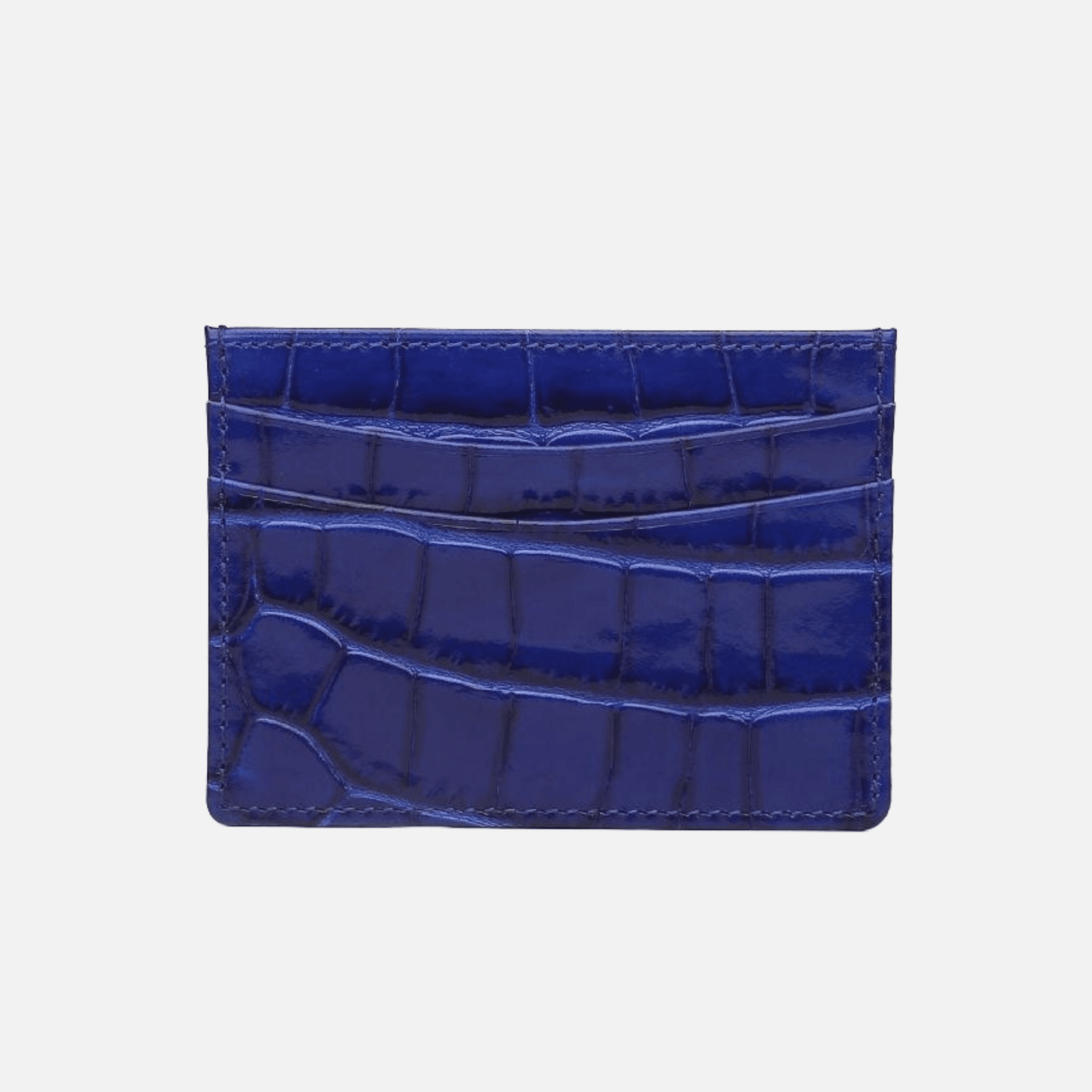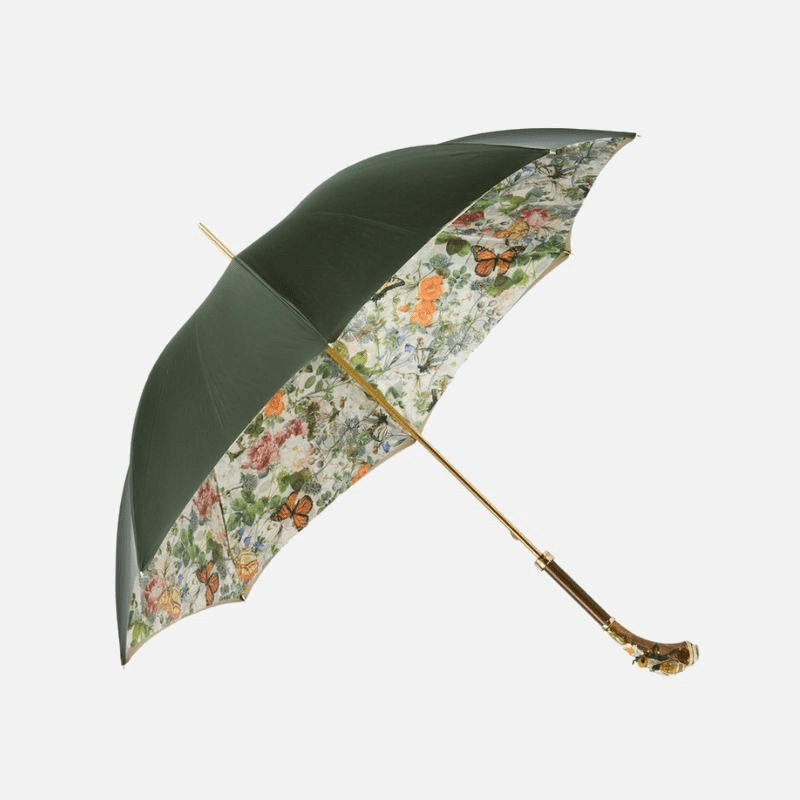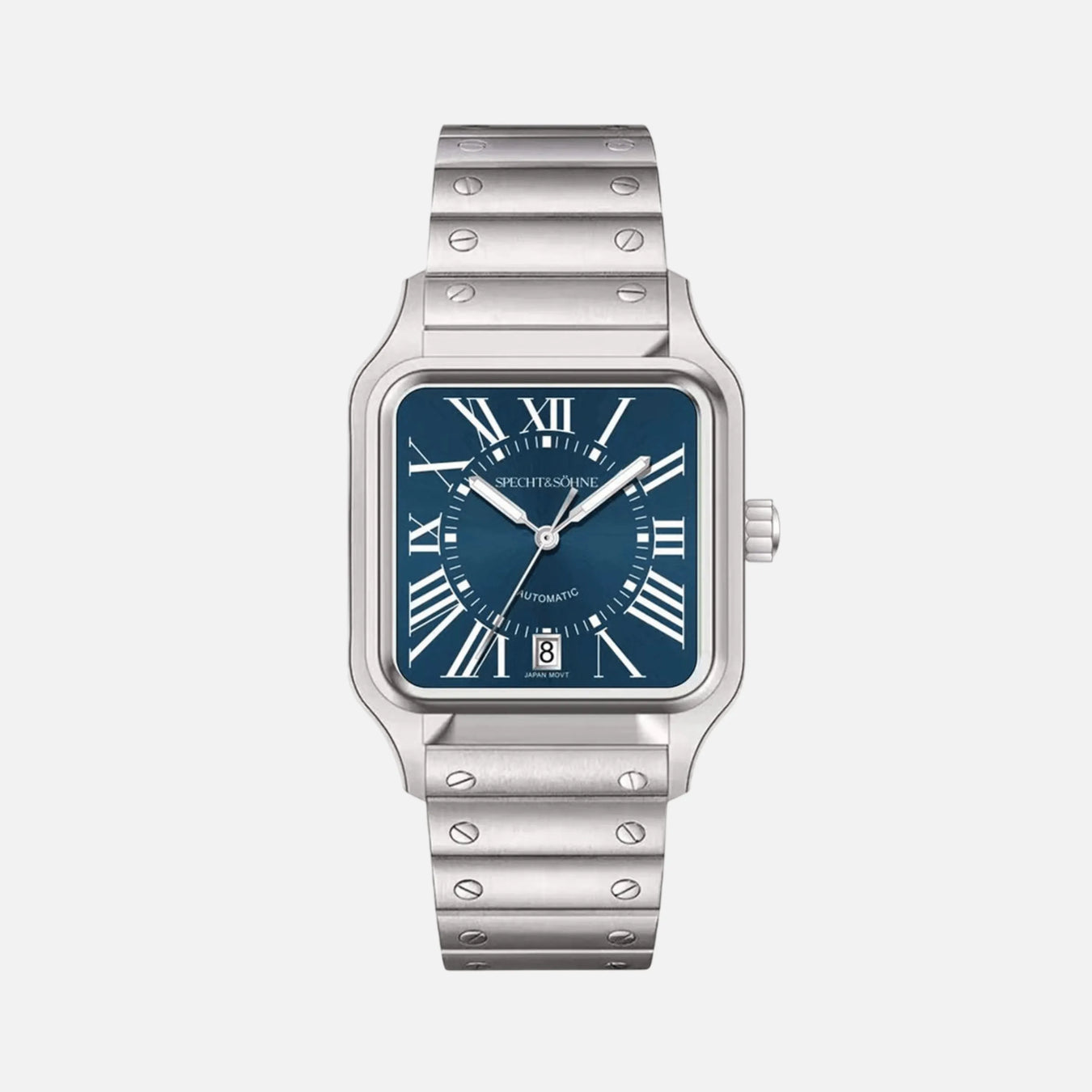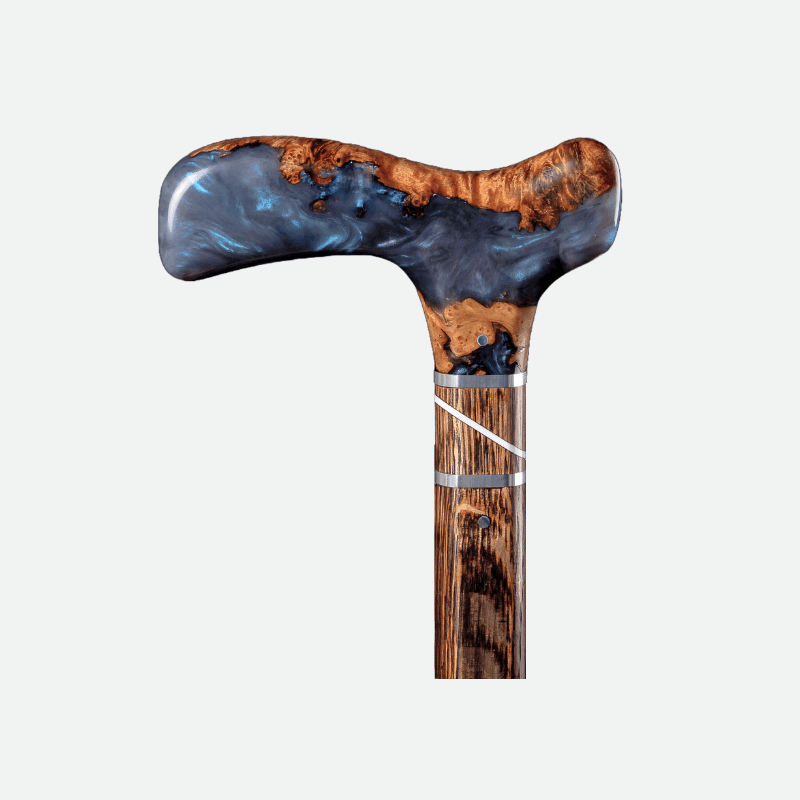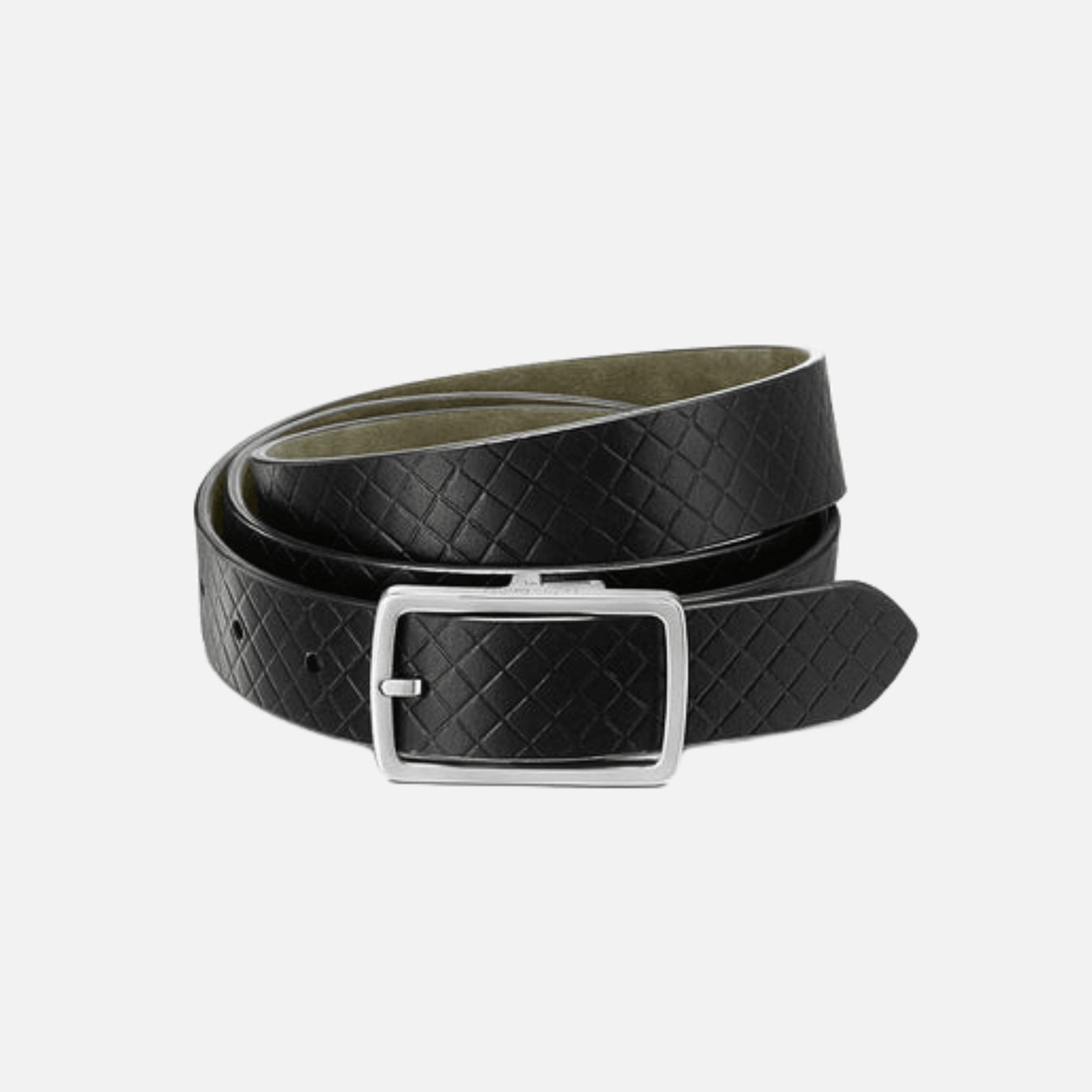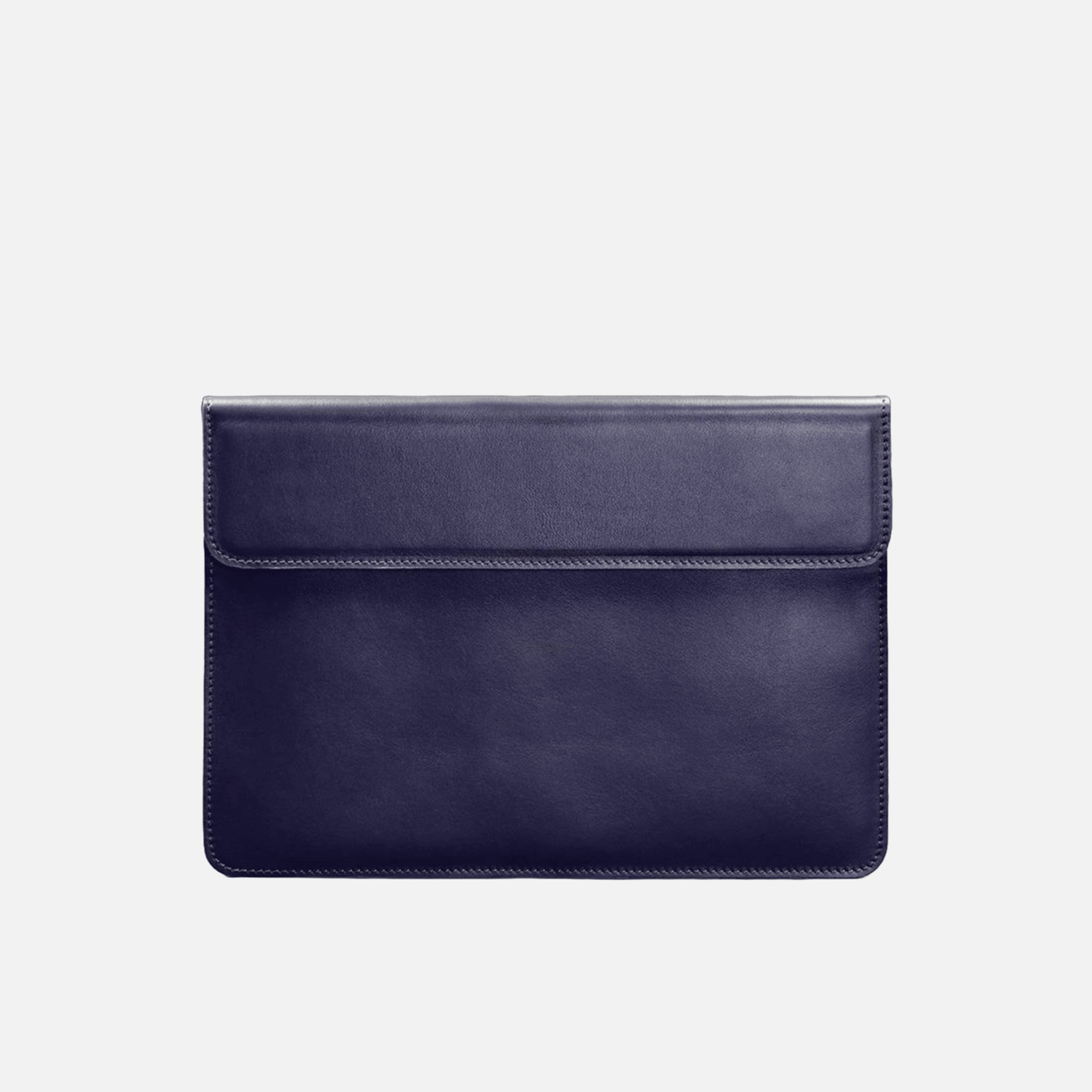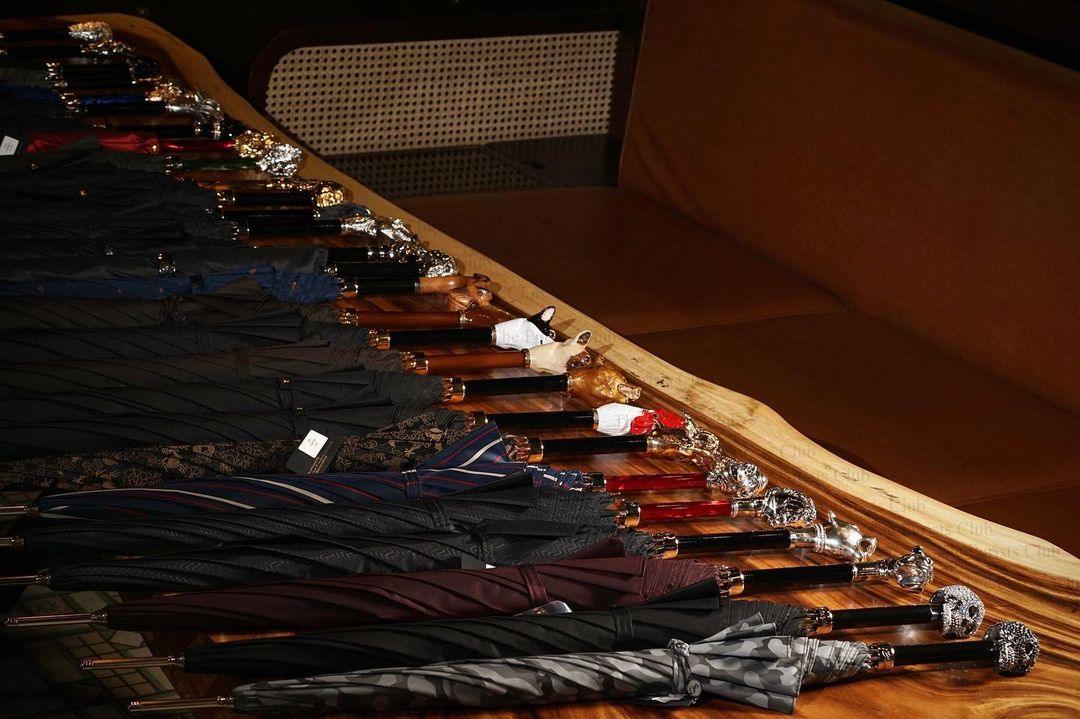
Unveiling Elegance: How Canes Have Evolved into Fashion Statements
The Hallowed History of Canes: From Utility to Symbolism
The cane, an emblem of functional necessity and social distinction, has weathered the sands of time, transitioning from a rudimentary walking aid to a symbol of prestige and style. In ancient civilizations, staffs and rods were not just tools for stability but also denoted authority and status. Pharaohs of Egypt bore ornate staffs crafted by skilled artisans, signifying their divine royalty, while in Greco-Roman culture, canes were symbols of power and governance.
During the Renaissance, canes evolved from objects of need to accessories of vanity. They were indispensable for fashion-forward Europeans who took pride in displaying their handmade walking sticks. By the 17th and 18th centuries, canes were requisite for the well-dressed gentleman; they manifested as made-to-order items, carefully selected to match one’s ensemble and personal flair.
The 19th century marked a surge in their artistic expression, with canes featuring intricate designs and elaborate materials, reflecting the owner’s wealth and taste. A list of distinguished artisans from this era would include premier craftsmen whose work transformed canes into sculptural works of art, embedded with jewels and carved with meticulous detail.
Navigating through the 20th century, canes continued to embody sophistication and grace, seamlessly integrating 5 modern design trends for enhanced mobility. From classic to contemporary trends, the luxury walking cane now oscillates between the practical and the decorative, merging aesthetics with comfort. Today, canes are not mere walking aids but fashion statements, embracing innovative design while retaining their storied past’s hallowed essence.
Understanding the Iconography of Canes in Fashion
The cane has evolved significantly, from a mobility aid to a sartorial embellishment indicating status and style. Iconography in fashion refers to the visual symbols through which a fashion item conveys its social, cultural, or aesthetic messages. The cane’s iconography is rich and multifaceted, shaped by centuries of usage and the creativity of artisans.
In fashion, canes are often handcrafted, with made-to-order options that allow for personalization and uniqueness. Artisans play a pivotal role in transforming ordinary materials into exquisite accessories, incorporating elements that reflect the owner’s identity and taste. They draw from 5 modern design trends in walking canes for enhanced mobility, which include:
- Minimalistic designs featuring clean lines that complement contemporary fashion sensibilities.
- Use of luxury materials like silver and fine woods that elevate the cane to a fashionable ornament.
- Integration of technology such as LED lights or smartphone compatibility for practicality without compromising aesthetics.
- Bold patterns and colors that mirror current fashion trends and highlight the user’s personal style.
- Customization options, from engraving to interchangeable parts, enabling wearers to adapt their canes to different occasions and outfits.
From classic to contemporary trends in luxury walking cane design and aesthetics, canes have been reinvented to serve as a testament to their owner’s place in the world. A luxurious, handcrafted cane can signify affluence, sophistication, and attention to detail. Conversely, a playful, brightly colored cane might express individuality and a penchant for the dramatic.
Thus, in fashion, the cane is not just an accessory; it is a statement. It speaks of the wearer’s appreciation for the intricate work of artisans, their command over personal style, and an understanding of how a functional tool can be transformed into a beacon of elegance and artistry.
The Cultural Resurgence of Canes in the Modern Era

In recent times, canes are not only seen as aids for enhanced mobility but have emerged as robust fashion accessories. The resurgence of canes within cultural tapestries is evident as they are prominently featured in high-fashion runways, celebrity events, and street style lookbooks. This is a testament to how canes have transcended their functional origins to become symbols of elegance and style.
Artisans around the world have played a pivotal role in this transformation. By crafting handmade canes that reflect a blend of tradition and modern appeal, these skilled craftsmen have contributed to the ever-growing list of fashionable mobility aids. Made-to-order services have also gained prominence, allowing individuals to personalize their canes to suit their unique tastes and preferences.
Five modern design trends in walking canes reflect how these accessories are keeping pace with contemporary fashions:
- Integration of High-Tech Materials: Carbon fiber and high-grade aluminum canes offer lightweight, durable options to the market.
- Customization Through Artistic Expression: Canes now frequently feature hand-painted designs or intricate carvings that reflect the user’s personality.
- Luxury Detailing: Precious metals, leather wraps, and jewel inlays turn functional canes into deluxe commodities.
- Eco-Friendly Styles: Sustainable materials and environmentally conscious manufacturing processes align with modern consumers’ values.
- Smart Canes: Equipped with technology such as GPS and fall detection, these canes embrace the digital age without sacrificing style.
The evolution from classic to contemporary trends in luxury walking cane design and aesthetics has been gradual but unmistakable. Canes today are as much about making a statement as they are about stability—not just an accessory but a declaration of individuality.
Design Evolution: The Craftsmanship Behind Fashionable Canes

The journey of canes from plain mobility aids to symbols of elegance is a testimony to the innovative spirit of artisans worldwide. These craftsmen have meticulously blended classic aesthetics with contemporary trends, ushering in an era where luxury walking canes are not just functional but also a mark of sophistication.
Handmade canes today bear the mark of their maker’s dedication. From selecting the perfect wood to carving intricate patterns, the process ensures each piece is unique. Made to order canes go a step further, inviting clients to be part of the creation process, resulting in a cane that reflects personal style and requirements.
Artisans have also been at the forefront of incorporating 5 modern design trends in walking canes for enhanced mobility. These include:
-
Lightweight materials: Carbon fiber and aluminum make for easy-to-carry fashion statements without compromising strength.
-
Adjustability: Telescopic designs offer versatility and comfort, adapting to the user’s height and posture.
-
Ergonomic grips: Shaped from fine woods or moldable acrylics, these handles provide better hand support and add an elegant touch.
-
Multifunctional features: Built-in lights for visibility, foldability for travel, and even embedded technology for monitoring health statistics.
-
Custom art: Whether it’s hand-painted scenes, embedded jewels, or metal engravings, these canes are often one-off pieces of art.
In the transition from classic to contemporary trends in luxury walking cane design and aesthetics, it is clear that canes have become a platform for personal expression. Every curve, joint, and decorative element stands for the wearers’ taste, blending seamlessly with their lifestyle while offering them the support they need. This fusion of art and utility is what makes fashionable canes a sought-after accessory in any discerning individual’s collection.
Material Mastery: Exploring the Elements of Elegant Canes
In the realm of fashion statements, canes have undergone a remarkable transformation, with a particular emphasis on the materials that define their elegance. Handmade canes, serving as a testament to the skill of their makers, craft a narrative of exclusivity and style. Made to order, each cane reflects the personal touch of the artisans who meticulously curate materials to ensure quality and appeal.
From classic to contemporary trends, luxury walking cane design has embraced the juxtaposition of tradition and modernity. Artisans list woods like walnut, cherry, and ebony as perennial favorites, prized for their durability and the warm, natural hues they bring to cane craftsmanship. For enthusiasts seeking modern design trends in walking canes for enhanced mobility, carbon fiber emerges as a top contender. This advanced material offers lightweight strength, and when coupled with an ergonomic handle, provides the perfect fusion of comfort and elegance.
Exotic materials have also made their mark on contemporary cane design. Leather, detailed with fine stitching, provides a rich texture that invites touch, while precious metals like silver and brass serve as accents that exude opulence. Inlays of mother-of-pearl or the use of ivory substitutes such as bone or faux materials showcase intricate patterns and contribute to the cane’s overall aesthetic allure.
The transformation of the walking cane from a mere mobility aid to a statement piece reflects a broader shift in perceptions. Meticulously crafted, these canes reveal a deep appreciation for material choice and construction, positioning them squarely at the intersection of function and finesse.
Celebrity Influence and the Glamorization of Canes
In a world where celebrity culture is pervasive, icons of film, music, and fashion have the power to redefine perceptions. Handmade canes, once seen as mere mobility aids, are experiencing a renaissance as luxury symbols, showcasing the craftsmanship of skilled artisans. The allure of bespoke, made-to-order accessories has captured the public’s imagination, prompting a resurgence in cane popularity.
A-list celebrities often ignite trends; when these public figures are photographed with elegant walking canes, the items gain an air of desirability. The fascination doesn’t stop at the silver screen or the red carpet; social media platforms are ablaze with images of stars donning chic canes that complement their personal style. These images contribute to transforming the cane from a functional tool into a must-have fashion accessory.
This trend aligns with the five modern design trends in walking canes that emphasize enhanced mobility while incorporating luxurious materials and cutting-edge design. From classic to contemporary trends in luxury walking cane design and aesthetics, the modern cane carries an air of exclusivity and elegance. Artisans are crafting canes that not only provide support but also make a statement, with intricate details and high-end materials that turn heads.
As celebrities continue to glamorize canes, they endorse a broader narrative of inclusivity and accessibility. The depiction of canes in the limelight serves as a powerful testament to the fusion of fashion and functionality. The cane, once a sign of infirmity, is now being reclaimed—an illustrious emblem that resonates with style-conscious individuals, regardless of their mobility needs.
Fashion Runways: Canes as a Couturier’s Accessory

Long considered purely utilitarian, canes have sashayed from the wings of practicality onto the glamorous runways, curated by visionary couturiers. The convergence of functionality with fashion has manifested in luxury walking canes becoming a vogue accessory. Artisans have transformed these aids into bespoke pieces that blur the lines between support and sophistication.
Handmade canes have started to feature prominently in fashion shows, with models strutting them alongside high couture, turning heads and challenging perceptions. These designer canes are not just aids but statements, flaunting everything from precious metals to exotic materials.
Made to order walking canes harness the allure of exclusivity. Fashion-conscious individuals revel in procuring custom canes that reflect their personal style and status. Couturiers collaborate closely with skilled artisans to create one-of-a-kind pieces that resonate with the wearer’s essence.
The trends evolving in this niche accessory are remarkable:
- Classic to Contemporary: From intricate floral patterns to sleek, minimalist models, the transition between classic craftsmanship and modern design trends in walking canes has been seamless.
- Material Mastery: Artisans list materials such as carbon fiber, titanium, and even 3D-printed elements, marrying tradition with technology.
- Luxury Embellishments: Precious stones, inlays, and engraving are turning canes into walking jewelry pieces.
- Color Pop: A departure from conventional wood tones – bold hues and patterns are now en vogue.
- Enhanced Mobility with Style: The fusion of 5 modern design trends in walking canes is not only enhancing mobility but doing so with an air of elegance.
Fashion houses are thus redefining the cane, transforming it from a symbol of necessity into an emblem of style, and, in the process, reimagining the lines between the artisanal and couture worlds.
Custom Canes: Personalization and Self-Expression in Accessory Design

The transformation of the walking cane from a simple mobility aid to a vessel of personal style speaks volumes about the evolution of accessory design. In the world of fashion, custom canes have become harbingers of individuality, providing a blend of function and flair that transcends their original purpose. This shift aligns perfectly with the movement from classic to contemporary trends in luxury walking cane design and aesthetics.
Artisans around the globe have embraced the challenge of customizing canes, viewing each piece as a canvas for creative expression. Handmade walking sticks are crafted with a meticulous attention to detail, with artisans often curating made-to-order pieces that resonate with the personalities and tastes of their clientele. They utilize an array of materials, designs, and decorative techniques to ensure that each cane is as unique as its owner.
The influence of modern design trends in walking canes is notable in their construction. For enhanced mobility and ergonomics, contemporary canes often incorporate lightweight materials, adjustable mechanisms, and comfortable grips. Yet, it is the personalized aesthetic touches that turn these walking aids into coveted fashion accessories. Selections might include:
- Inlaid gemstones or precious metals for a touch of opulence
- Carved handles depicting personal insignias or motifs
- Custom color schemes aligning with personal wardrobe preferences
- High-gloss finishes or matte textures based on modern trends
- Engraved messages or names that add a level of intimacy
Through customization, walking canes have come to represent more than support; they are a declaration of identity, a means of self-expression that complements both the user’s stability and style. In this dynamic interplay between practicality and personal taste, the cane transforms into an elegant testament to its owner’s sensibilities.
Elegance in Etiquette: The Proper Way to Carry and Use a Cane
Canes, having transitioned from classic to contemporary trends in luxury walking cane design and aesthetics, now hold a prominent place in the pantheon of fashion. The elegance of a cane, however, extends beyond its physical appearance to the manner in which it is carried and used. Mastering the etiquette of cane usage is crucial for those who wish to integrate this accessory seamlessly into their sophisticated ensemble.
While etiquette may evolve, certain principles remain timeless. When carrying a cane, the handle should rest comfortably in the palm with the arm resting naturally at one’s side. It is customary for the cane to be carried on the side opposite the weaker or injured leg, transferring weight away from the ailment. Movement is key; the cane and the affected leg should stride in unison, offering stability and an unforced grace.
Artisans and designers who specialize in handmade and made-to-order walking canes emphasize the importance of holding the cane correctly to maintain an air of poise. The cane should not project outward or impede others but rather be discreetly placed at one’s side when standing still.
When it comes to design selection, those who are fashion-forward might incline toward 5 modern design trends in walking canes for enhanced mobility, opting for pieces that incorporate current styles without sacrificing the cane’s traditional sophistication. Consequently, artisans’ lists often include canes with an ergonomic grip, reflecting both the practicality and elegance intrinsic to modern design sensibilities.
Ultimately, elegance in etiquette is about respect—for the user, the cane, and the environment in which it is used. As these fashion statements have evolved, so has their acknowledgment as symbols of poise, compelling those who carry them to do so with a measured blend of pride and humility.
Future Forecasts: The Role of Canes in Upcoming Fashion Trends
As fashion continuously evolves, the role of canes is projected to expand significantly within the realm of style. Artisans and designers are pushing the envelope, transforming the traditional walking stick into a coveted fashion piece. With a surge in demand for bespoke accessories, made to order canes are set to take center stage in the accessory world. These personalized creations offer an intimate touch to one’s wardrobe, seamlessly merging functionality with elegance.
Looking ahead, expect to see five modern design trends in walking canes that emphasize enhanced mobility without sacrificing style:
-
Technological Integration: Smart canes equipped with GPS, health-tracking capabilities, and even fall detection are expected to intertwine with daily fashion. This symbiosis of tech and style caters to a tech-savvy generation that values both innovation and aesthetics.
-
Sustainable Materials: Eco-consciousness is making its way to the world of walking aids. Canes crafted from sustainable, ethically-sourced materials will not only make a statement but also reflect the wearer’s environmental stance.
-
Bold Customization: Handmade canes will increasingly reflect their owners’ personalities. Artisans are likely to offer a more extensive list of customization options, from hand-carved designs to personalized grips, allowing for an ultimate expression of individuality.
-
High-End Collabs: Luxury fashion houses may collaborate with artisanal cane makers, creating from classic to contemporary trends in luxury walking cane design and aesthetics. These would blend the brand’s signature style with the functional aspect of mobility aids.
-
Runway Trends: Canes might soon strut down high-fashion runways as part of designers’ collections. With an emphasis on inclusivity, the incorporation of stylish walking aids into model ensembles could be expected.
The upcoming fashion trends point towards a future where walking canes are no longer mere support tools but are integral elements of personal style, highlighting the wearer’s taste and lifestyle.
From Necessity to Luxury: The Transformation of Canes in Society
The cane has undergone a significant metamorphosis, transitioning from a mere assistant for the infirm to a symbol of prestige and style. Embarking on this journey as rudimentary sticks, canes served the fundamental purpose of providing support to those who required enhanced mobility. However, as the centuries progressed, these practical devices evolved into embodiments of power and social status, particularly evident in the elaborate walking sticks of European nobles which were intricately crafted by artisans.
In the modern era, the design trends in walking canes have undergone another transformation, influenced by an appreciation for both aesthetic appeal and personalized flair. Handmade canes, meticulously fashioned by skilled craftsmen, now serve as quintessential expressions of individual style. The shift from classic to contemporary trends in luxury walking cane design is apparent, with a current predilection for:
- Personalization and uniqueness through made-to-order services
- Incorporation of high-end, durable materials like exotic woods and precious metals
- Fusion of traditional craftsmanship with 5 modern design trends, including minimalist aesthetics and ergonomic grips
- Artisans list customization options like monograms, hand-carved embellishments, and jeweled inlays
- Advanced functional designs tailored for comfortable long-term use without compromising on elegance or sophistication
Walking sticks and canes have ultimately transitioned from necessary aids to opulent accessories, offering both old-world charm and nouveau riche indulgence. They stand as an intersection of history, health, and high fashion, transcending their original utilitarian intent to become a flexible accessory for those seeking to make a statement with every step.
Conclusion: Canes as an Enduring Emblem of Style and Grace
The evolution of canes from mere mobility aids to significant fashion accessories is a testament to the adaptive nature of human creativity. Today’s canes embody the fusion of style and function, encompassing an array of designs that cater to individual aesthetic preferences and mobility needs. Artisans play a pivotal role in this transformation, handcrafting bespoke pieces that are as unique as the individuals who wield them. Moreover, the trend towards made-to-order canes ensures that each piece is able to reflect the personality and elegance of its owner.
The landscape of walking cane design has seen a remarkable change, incorporating 5 modern design trends that have revolutionized enhanced mobility. These include:
- Use of lightweight, durable materials for improved functionality
- Integration of adjustable mechanisms for personalized comfort
- Inclusion of ergonomic handles that marry comfort with elegance
- Introduction of bold patterns and colors reflecting contemporary fashion movements
- Implementation of smart technology features for an upgraded user experience
From classic to contemporary, trends in luxury walking cane design and aesthetics continue to evolve, ensuring that the cane remains a staple of sartorial elegance. The cane, therefore, serves not only as a support for those who require it but also as a beacon of grace and sophistication, shining across generations. As style and practicality converge, the walking cane stands unwavering, a timeless accessory for those who embrace it as a statement of their individuality and poise.

